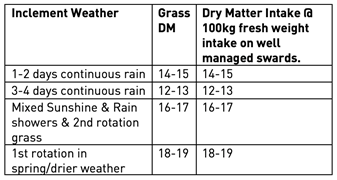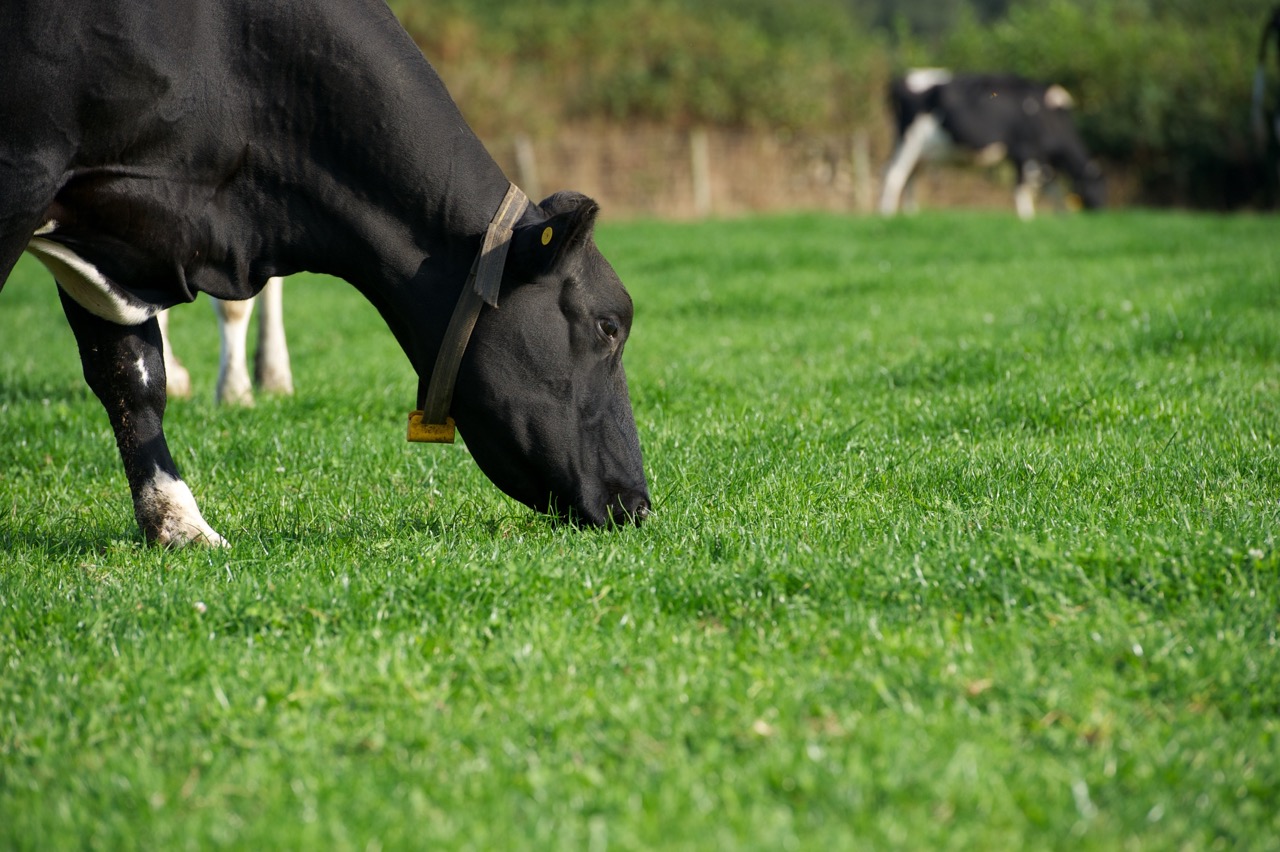“With great grazing conditions and grass growth in full swing, it may be tempting to pull supplementary feeding levels back significantly,” says Kevin Doyle Technical Manager at Phileo UK & Ireland. “While it is a great opportunity to maximise grass in the diet we mustn’t forget the genetics and performance potential of the cows we are feeding.”
To helps cows reach their peak yields or ensure good fertility, we need to focus on driving dry matter intakes (DMI) while grazing. It’s important to also recognise the level of milk yield that grass can realistically support and complement these nutrients elsewhere in the diet. Overestimating this is the most common cause of lackluster performance in these areas while grazing.
“February was exceptionally dry, allowing many herds to graze in earnest,” he continues.“A wet March then stalled farmers turning cows out full time, leading to to level but lower covers across paddocks. Resulting multiple diet changes and lower levels of fibre during this time challenged rumen function in many cases.
As we know, grazed grass is the cheapest feed available on farm, and when well managed is exceptionally nutrient dense. However, grass alone does not provide a fully balanced diet.
The energy density of grass is usually very good (often in excess of 11.5 MJ/kg DM) but in reality its nutrient analysis can vary substantially depending on management, growing conditions and the weather - making balancing diets for grazing herds a more difficult task.
Utilising the rumen
As the engine of the cow and primary source of digestion, a well-tuned rumen can mitigate the negative effects of grass variability and ensure the diet is being fully utilised, helping herds perform to their full potential.
A healthy microbial population in the rumen is essential for a dairy cow to maintain herself, get back in calf and produce high levels of milk solids from a forage-based diet.
When we feed cows we are, in reality, feeding the rumen microbes and they, in turn, feed the cow by fermenting feed under anaerobic conditions, similarly to how a silage pit or anaerobic digestor works. This process produces Volatile Fatty Acids (VFAs) that provide over 80% of the cow’s energy requirements, and the microbes also synthesise over 60% of the cow’s protein requirements.
The challenges of a grass-only diet
When milk prices fall, we must be vigilant that efforts to cut costs do not inadvertently cost us money by compromising on a balanced approach to feeding cows at grass. Peak yield will determine milk and solids yield for the entire lactation period, so it is incredibly important to optimise peak yield now to secure production later.
Grazed grass is an exceptional feed, often surpassing even the best made silages, however it does not come without its challenges, which can affect both rumen and cow performance.
Kevin suggests farmers carefully select supplementary feed to balance nutrients that grass is lacking. Key areas to consider include:
- Dry Matter Intake (DMI) - Cows intakes are limited to 100-120kg fresh weight per day. At 15% DM cows can eat 15kg DMI, whereas at 20% DM this increases to 20kg DMI. With an ME of 11.5%, this equates to 11 litres difference in potential milk from grass! Weather can also affect grass DM. (See table below)
- Low DM grass during periods of wet weather reduces the production of saliva which naturally buffers the rumen, exacerbating existing and underlying problems with low rumen pH and sub-acute ruminal acidosis (SARA).
- Low fibre levels on lush leafy swards can limit rumen ‘scratch factor’ and can lead to reduced rumination and a fall in pH.
- High levels of Crude Protein (CP), often in excess of 25%, can cause excess ammonia levels which drains energy to metabolise and can cause issues with embryo mortality.
- Variable sugar levels peak when sunshine is at its most intense (i.e. late afternoon or on particularly sunny days), affecting the available nutrient profile. This can cause rapid fermentation by the rumen microbes and a subsequent fall in pH. Conversely, on dull, cooler days, the supply of sugar and thus energy available to the cow, is reduced.

Solutions to overcome and balance grass variability
Farmers should work closely with their feed advisor to choose rations and feeding levels that suit their system, genetics and yield potentia.
Key factors in a good grazing based feed include:
- High levels of quality digestible fibre (such as beet pulp or soya hulls) which supply a slower degrading source of energy
- Slower degrading cereals such as barley and maize
- Sources of bypass protein to balance high levels of rumen degradable protein in fresh grass.
- Carefully balanced sources of trace elements and macro-minerals (especially magnesium)
- When buffer feeding, consider utilising high D-value grass or maize silage.
- Support the rumen with Actisaf® live yeast.
By supporting key microbes, we can optimise how well the rumen operates and make the most of every bite of feed, regardless of system, stage of lactation and time of year. It’s helpful to think of the rumen like the engine of car: a major power source for the cow that needs regular maintenance and care to keep everything else running smoothly.
Actisaf® Sc47 live yeast is scientifically proven to support the growth of microbes correlated to feed efficiency and provide real, on farm benefits. It can play a crucial role in feeding programmes throughout the grazing season by supporting digestive health and nutrient utilisation, and protecting the rumen against SARA.
The probiotic elements of Actisaf optimise the digestion of fibre at grazing by promoting the growth of beneficial microorganisms in the gut, improving rumen fermentation and enhancing feed digestion.
On farm trial work has shown feeding Actisaf helps improve the production of milk solids via increased yield and increased butterfat percentages, while also enhancing persistency of milk solids yield when fed through the summer. By helping the rumen adapt to changes in diet and improving fibre digestion, it is particularly useful as the profile of grass changes throughout the grazing period.
Actisaf® is the only live yeast to consistently demonstrate a dual mode of action – reducing the risk of SARA and enhancing fibre digestion – resulting in increased feed conversion efficiency, enhanced milking persistency and higher milk constituents and good conception rates throughout the summer months.

